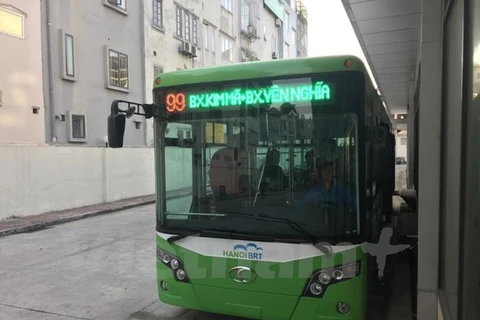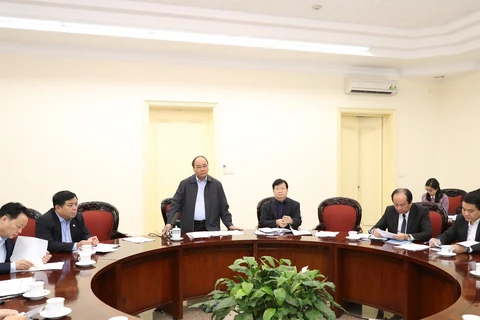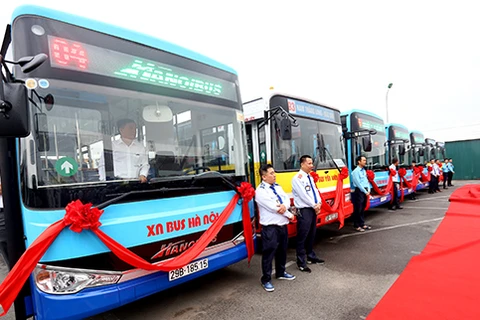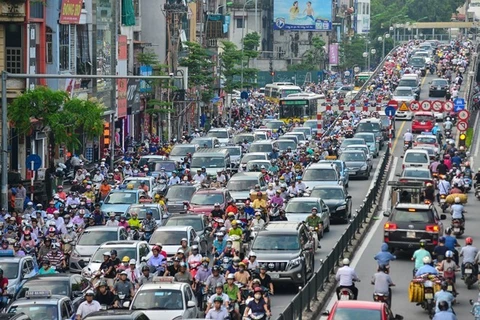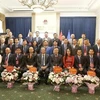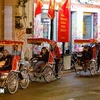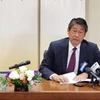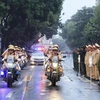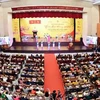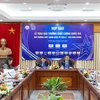Hanoi (VNA) - Around 84 percent of residents of the capital city approve of the proposal to limit the use of personal vehicles so as to ease traffic jams, according to a recent survey.
The survey, jointly conducted by municipal People’s Committee and the city’s police, asked for their opinions on the city’s policy to improve traffic management. It was done across 30 districts and covered about 15,300 households.
Survey results show that 84 percent of respondents in the inner city and 85.1 percent of those in the outer city (Ring Road 3 area) believe that limiting the number of personal vehicles is a good plan.
An overwhelming 90.3 percent of those surveyed agree to the proposal of stopping motorbikes and limiting the use of personal vehicles, provided that public transport is able to meet people’s demands.
Another 72 percent support the suggestion that school hours and work hours should be adjusted to reduce traffic congestion.
After studying road traffic management in a number of European and Asian cities, the Hanoi People’s Committee has decided that it is pivotal to develop a strong public transport system and provide citizens with support to use these systems, if they want to limit the use of personal vehicles.
Administrative measures such as collecting parking fees during peak hours in the inner city, and increasing parking rates will also act as deterrents and limit the use of personal vehicles.
Hanoi is developing a public transport system, which by 2020 will be able to serve the needs of 30 to 35 percent of citizens in the inner city and of 15 percent of citizens in satellite cities. By 2030, it will be able to serve the demands of 50 to 55 percent of people in the inner city and of 40 percent in the satellite cities.
The city is also planning to confiscate second-hand motorbikes that fail to meet safety requirements. Technology is being utilised for traffic management, and citizens are being encouraged to walk or use public transport and bicycles, where possible.-VNA
The survey, jointly conducted by municipal People’s Committee and the city’s police, asked for their opinions on the city’s policy to improve traffic management. It was done across 30 districts and covered about 15,300 households.
Survey results show that 84 percent of respondents in the inner city and 85.1 percent of those in the outer city (Ring Road 3 area) believe that limiting the number of personal vehicles is a good plan.
An overwhelming 90.3 percent of those surveyed agree to the proposal of stopping motorbikes and limiting the use of personal vehicles, provided that public transport is able to meet people’s demands.
Another 72 percent support the suggestion that school hours and work hours should be adjusted to reduce traffic congestion.
After studying road traffic management in a number of European and Asian cities, the Hanoi People’s Committee has decided that it is pivotal to develop a strong public transport system and provide citizens with support to use these systems, if they want to limit the use of personal vehicles.
Administrative measures such as collecting parking fees during peak hours in the inner city, and increasing parking rates will also act as deterrents and limit the use of personal vehicles.
Hanoi is developing a public transport system, which by 2020 will be able to serve the needs of 30 to 35 percent of citizens in the inner city and of 15 percent of citizens in satellite cities. By 2030, it will be able to serve the demands of 50 to 55 percent of people in the inner city and of 40 percent in the satellite cities.
The city is also planning to confiscate second-hand motorbikes that fail to meet safety requirements. Technology is being utilised for traffic management, and citizens are being encouraged to walk or use public transport and bicycles, where possible.-VNA
VNA

